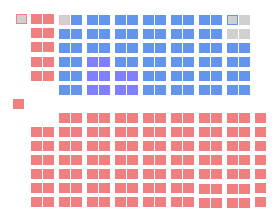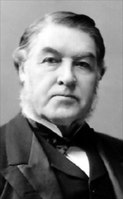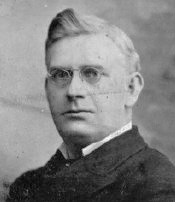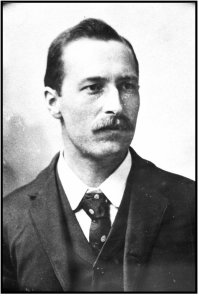The Green Party of Canada is a federal political party in Canada that was founded in 1983. It has been led by Elizabeth May since 26 August 2006.
The Progressive Party of Canada was a federal-level political party in Canada in the 1920s until 1930. It was linked with the provincial United Farmers parties in several provinces, and it spawned the Progressive Party of Saskatchewan, and the Progressive Party of Manitoba, which formed the government of that province. The Progressive Party was part of the farmers' political movement that included federal and provincial Progressive and United Farmers' parties.

The Canadian federal election of 1921 was held on December 6, 1921, to elect members of the House of Commons of Canada of the 14th Parliament of Canada. The Union government that had governed Canada through the First World War was defeated, and replaced by a Liberal government under the young leader William Lyon Mackenzie King. A new third party, the Progressive Party, won the second most seats in the election.

The Canadian federal election of 1972 was held on October 30, 1972, to elect members of the House of Commons of Canada of the 29th Parliament of Canada. It resulted in a slim victory for the governing Liberal Party, which won 109 seats, compared to 107 seats for the opposition Progressive Conservatives. A further 48 seats were won by other parties and independents. On election night, the results appeared to give 109 seats to the Tories, but once the counting had finished the next day, the final results gave the Liberals a minority government and left the New Democratic Party led by David Lewis holding the balance of power. See 29th Canadian parliament for a full list of MPs elected.
There have been various groups in Canada that have nominated candidates under the label Labour Party or Independent Labour Party or other variations from the 1870s until the 1960s. These were usually local or provincial groups using the Labour Party or Independent Labour Party name, backed by local Labour Councils or individual trade unions. There was an attempt to create a national Canadian Labour Party in the late 1910s and in the 1920s, but these were partly successful. The Communist Party of Canada, formed in 1921/22, fulfilled some of labour's political yearnings from coast to coast, and then the Co-operative Commonwealth Federation - Worker Farmer Socialist" was formed in 1932. With organic ties to the organized labour movement, this was a labour party by definition.

The Canadian federal election of 1980 was held on February 18, 1980, to elect members of the House of Commons of Canada of the 32nd Parliament of Canada. It was called when the minority Progressive Conservative government led by Prime Minister Joe Clark was defeated in the Commons.

The Canadian federal election of 1945 was the 20th general election in Canadian history. It was held June 11, 1945 to elect members of the House of Commons of Canada of the 20th Parliament of Canada. Prime Minister William Lyon Mackenzie King's Liberal government was re-elected to its third consecutive government, although this time with a minority government as the Liberals fell five seats short of a majority.

The Canadian federal election of 1979 was held on May 22, 1979, to elect members of the House of Commons of Canada of the 31st Parliament of Canada. It resulted in the defeat of the Liberal Party of Canada after 11 years in power under Prime Minister Pierre Trudeau. Joe Clark led the Progressive Conservative Party to power, but with only a minority of seats in the House of Commons. The Liberals, however, did beat the Progressive Conservatives in the overall popular vote by more than 400,000 votes.
The Liberal-Labour banner has been used several times by candidates in Canadian elections:
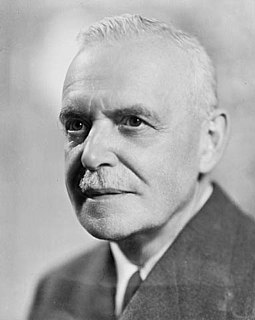
The Canadian federal election of 1949 was held on June 27 to elect members of the House of Commons of Canada of the 21st Parliament of Canada. It was the first election in Canada in almost thirty years in which the Liberal Party of Canada was not led by William Lyon Mackenzie King. King had retired in 1948, and was replaced as Liberal leader and Prime Minister by Louis St. Laurent. It was also the first federal election with Newfoundland voting, having joined Canada in March of that year, and the first election since 1904 in which the parts of the Northwest Territories were granted representation. The Liberal Party was re-elected with its fourth consecutive government, winning just under 50% of the vote. This victory was the largest majority in Canadian history to that point and remains, by any measure, the largest-ever majority won by the Liberal Party. As of 2017, it remains the third largest majority government in Canadian history.

The Canadian federal election of 1953 was held on August 10 to elect members of the House of Commons of Canada of the 22nd Parliament of Canada. Prime Minister Louis St. Laurent led his Liberal Party of Canada to its fifth consecutive majority government, although the party lost seats to the other parties.

The Canadian federal election of 1963 was held on April 8 to elect members of the House of Commons of Canada of the 26th Parliament of Canada. It resulted in the defeat of the minority Progressive Conservative (Tory) government of Prime Minister John Diefenbaker. For Social Credit, despite getting their highest ever share of the vote, the party lost 6 seats compared to its high-water mark in 1962.
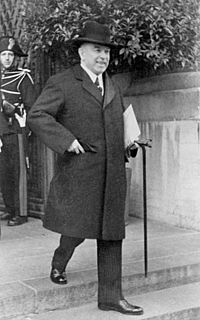
The Canadian federal election of 1935 was held on October 14, 1935. to elect members of the House of Commons of Canada of the 18th Parliament of Canada. The Liberal Party of William Lyon Mackenzie King won a majority government, defeating Prime Minister R. B. Bennett's Conservatives.

The Canadian federal election of 1926 was held on September 14 to elect members of the House of Commons of Canada of the 16th Parliament of Canada. The election was called following an event known as the King–Byng affair. In the 1925 federal election, Prime Minister William Lyon Mackenzie King's Liberal Party of Canada won fewer seats in the House of Commons of Canada than the Conservatives of Arthur Meighen. Mackenzie King, however, was determined to continue to govern with the support of the Progressive Party. The combined Liberal and Progressive caucuses gave Mackenzie King a plurality of seats in the House of Commons, and the ability to form a minority government.
The agreement collapsed, however, following a scandal, and Mackenzie King approached the Governor-General, Baron Byng of Vimy, to seek dissolution of the Parliament. Byng refused on the basis that the Conservatives had won the largest number of seats in the prior election, and called upon Meighen to form a government.

The Canadian federal election of 1904 was held on November 3 to elect members of the House of Commons of Canada of the 10th Parliament of Canada. Prime Minister Sir Wilfrid Laurier led the Liberal Party of Canada to a third term in government, with an increased majority, and over half of the popular vote.

The Canadian federal election of 1882 was held on June 20, 1882, to elect members of the House of Commons of Canada of the 5th Parliament of Canada.

The Canadian federal election of 1887 was held on February 22, 1887, to elect members of the House of Commons of Canada of the 6th Parliament of Canada.
Gurbax Singh Malhi is an Indian-born Canadian politician. A Liberal, he was first elected as the Member of Parliament for Bramalea—Gore—Malton in 1993, and served as its representative in the House of Commons for 18 consecutive years until his defeat in the 2011 election.

Joseph Tweed Shaw was a Canadian politician. He served in the House of Commons of Canada from 1921 to 1925 as an independent Labour Member of Parliament (MP), and later became an MLA and leader of the Alberta Liberal Party.

This article is the Electoral history of Sir Charles Tupper, the sixthth Prime Minister of Canada. A Conservative, he became prime minister upon the resignation of Prime Minister Sir Mackenzie Bowell over the Manitoba Schools Question in 1896. Tupper was the shortest-serving prime minister, with a term of only 68 days. He led his party in two general elections and lost both, to Sir Wilfrid Laurier

